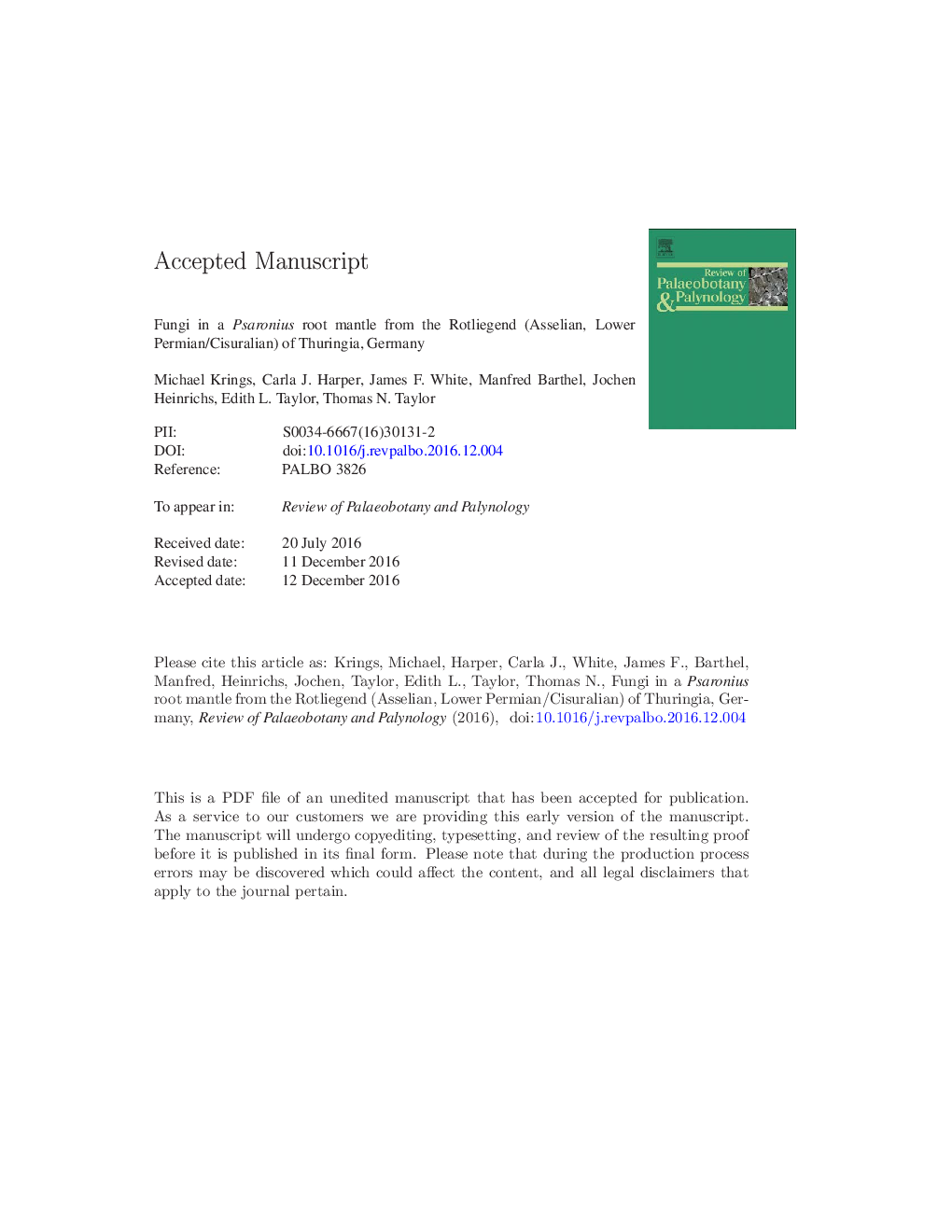| Article ID | Journal | Published Year | Pages | File Type |
|---|---|---|---|---|
| 5788411 | Review of Palaeobotany and Palynology | 2017 | 59 Pages |
Abstract
Much is known about the biology and ecology of the plants that comprised the forest ecosystems during the Carboniferous and Early Permian. However, a broad understanding of the interrelatedness between the plants and other organisms living in these forests has been slow to develop. The tree fern Psaronius (Marattiales), an important element in many Pennsylvanian and Early Permian peat-forming forest ecosystems, gained mechanical stability from a massive root mantle. Thin sections of a permineralized Psaronius root mantle from the Manebach Formation (Asselian, Lower Permian/Cisuralian) near Ilmenau, Germany, show a diverse assemblage of predominantly intracellular fungi in all root tissues. Especially interesting is a fungus that produces prominent, boot-shaped swellings close to where it passes through host cell walls and what appear to be physiological interfaces comprised of short, densely clustered hyphal branches within the host cells. Other fungal remains occur in the form of chytrid-like sporangia, several types of basidiomycete hyphae with simple, medallion, and ampulliform clamp connections, and tenuous mycelia resembling present-day 'fine endophytes.' This fungal assemblage represents one of the best preserved Carboniferous-Early Permian fungal communities documented to date. It strengthens the hypothesis that plant-fungus associations were highly diverse and complex in late Paleozoic forests, likely because many plants in these ecosystems were long-lived and complex in morphology and internal organization, and thus provided multiple contact sites and ecologically distinct microhabitats for fungi.
Related Topics
Physical Sciences and Engineering
Earth and Planetary Sciences
Palaeontology
Authors
Michael Krings, Carla J. Harper, James F. White, Manfred Barthel, Jochen Heinrichs, Edith L. Taylor, Thomas N. Taylor,
